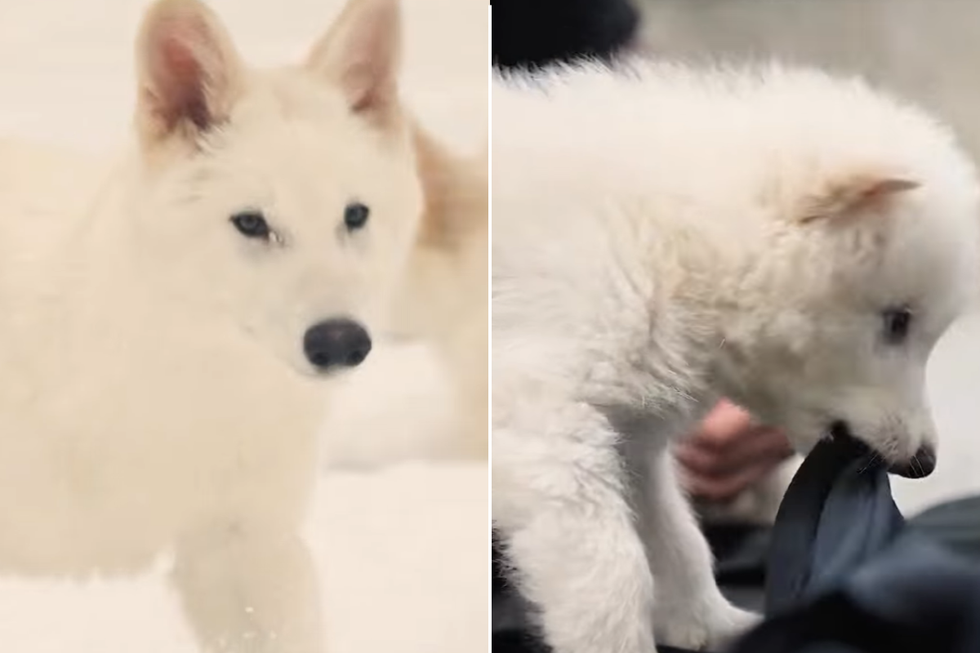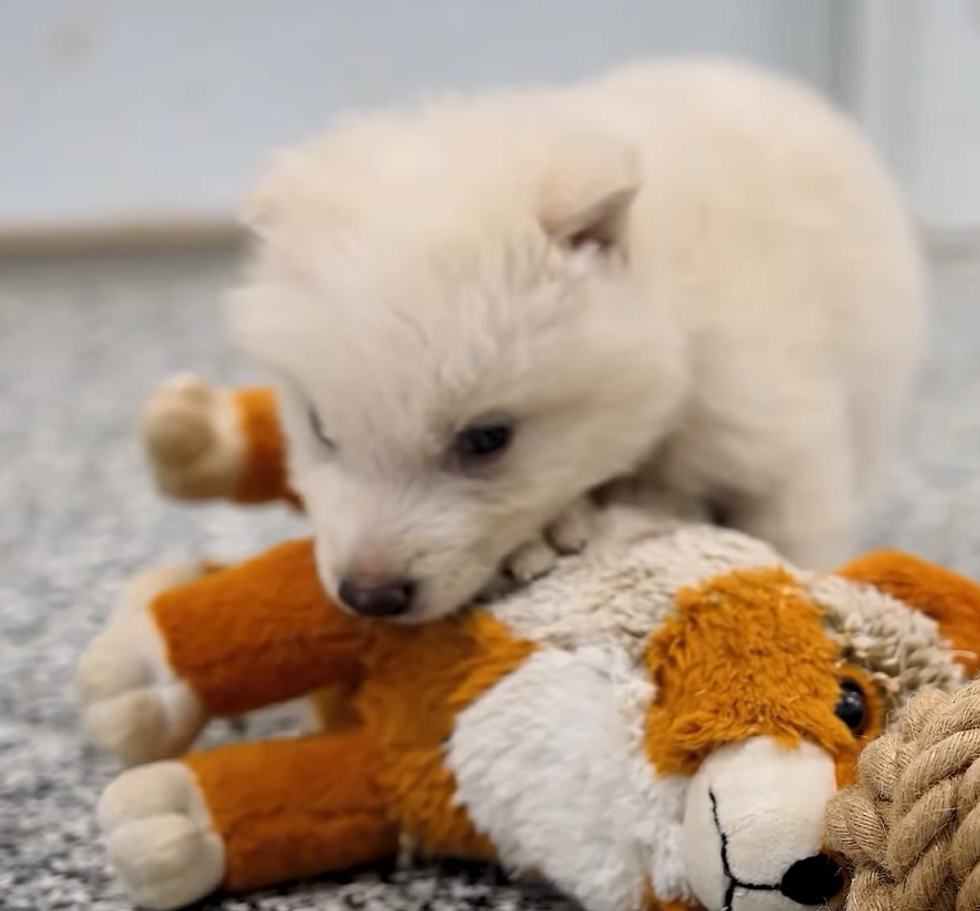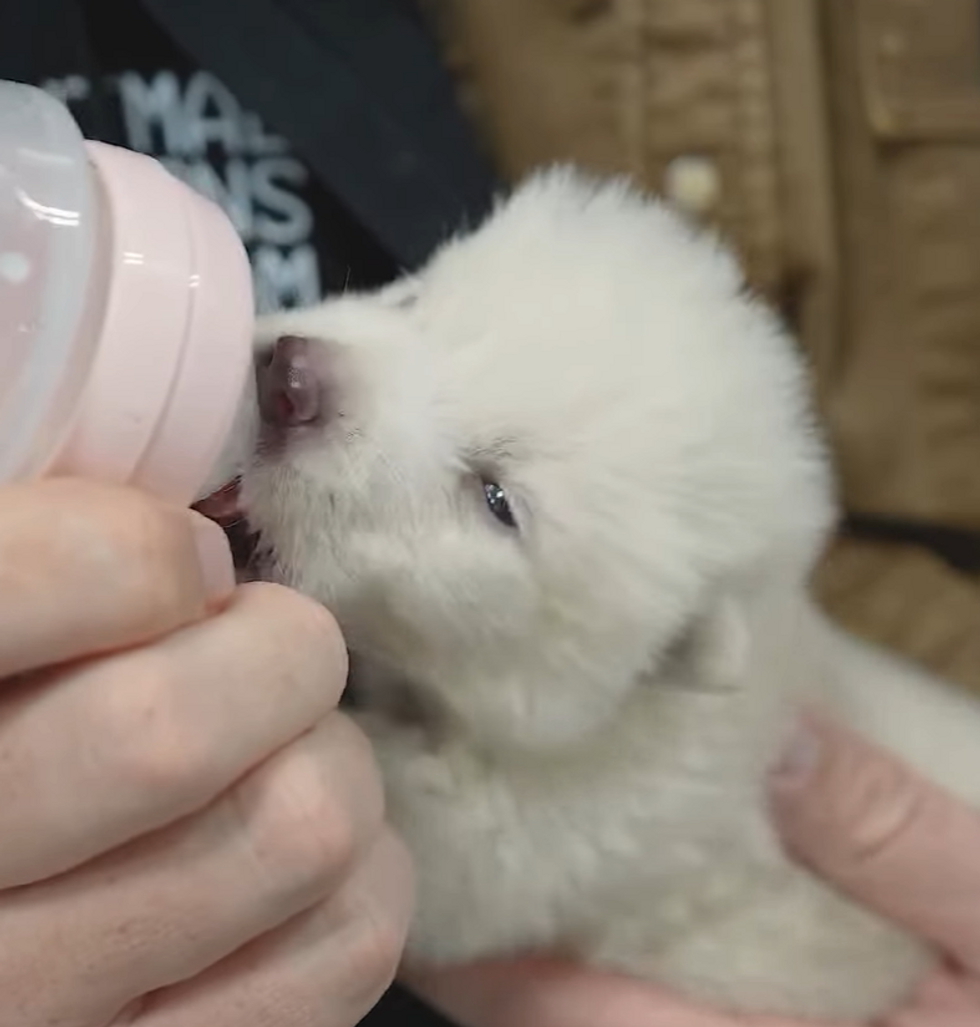WATCH: Nick Pope speaks to Patrick Christys about science fiction
GB News
Some scientists have questioned the move, saying they are actually just grey wolves with genetic edits
Don't Miss
Most Read
Trending on GB News
Scientists have successfully "revived" the Dire Wolf species after 10,000 years of extinction in what is being hailed as the world's first "de-extinction".
Genetic engineering company Colossal Biosciences announced today that they have created three dire wolves using DNA extracted from ancient fossils.
The breakthrough marks a revolutionary milestone in scientific progress, according to the Dallas-based firm.
The three dire wolves include two six-month-old males named Romulus and Remus, and a younger female called Khaleesi, named after a character from Game of Thrones.

Two of the five-month-old Dire Wolves
Colossal Biosciences
They were created using DNA from a 13,000-year-old tooth and a 72,000-year-old skull, combined with genes from grey wolves. The animals now live in a secure 2,000-acre ecological preserve with round-the-clock care from dedicated staff.
To create the dire wolves, Colossal's team performed 20 precise genetic edits to Grey Wolf DNA, with 15 of these edits being extinct variants from the Dire Wolf genome.
The scientists targeted specific genes linked to size, musculature, coat colour and texture.
Analysis of the ancient DNA revealed Dire Wolves had white coats with thick fur, consistent with animals that lived during cold periods of the Pleistocene ice ages.
LATEST DEVELOPMENTS:
- Belize's Great Blue Hole holds 'concerning secret' after scientists explored deep into the 410ft caveScientists have expressed concern after one of the world's most unusual natura
- Asteroid update issued as 'city-destroying' space rock continues towards Earth
- Archaeology breakthrough as scientists uncover remnants of ancient garden at Jesus Christ's burial site

Scientists created the three animals using DNA
Colossal Biosciences
"Our team took DNA from a 13,000-year-old tooth and a 72,000-year-old skull and made healthy dire wolf puppies," said Colossal CEO Ben Lamm.
"The de-extinction of the dire wolf is transformative and heralds an entirely new era of human stewardship of life," added Dr Christopher Mason, a scientific advisor for Colossal. The company described the achievement as "magic" made possible through advanced technology.
Dire Wolves were prehistoric canines that roamed the Americas until about 13,000 years ago, weighing between 130 to 150 pounds. They were approximately 25 per cent larger than modern Grey Wolves, with more muscular bodies, larger heads and powerful jaws.
The species gained widespread recognition through HBO's "Game of Thrones" series, where they served as the sigil of House Stark. However, some scientists have questioned whether these animals can truly be called Dire Wolves.

Scientists have questioned the legitimacy of the breed
Colossal Biosciences
New Scientist reports that Grey Wolves and Dire Wolves last shared a common ancestor around six million years ago.
"Species concepts are human classification systems, and everybody can disagree and everyone can be right," said Beth Shapiro of Colossal.
The company maintains that if the animals look like Dire Wolves, they are Dire Wolves.
Colossal Biosciences has ambitious plans beyond Dire Wolves, with projects underway to revive the woolly mammoth, Tasmanian tiger and Dodo bird.

Scientists have questioned the legitimacy of Colossal Biosciences' claims
Colossal Biosciences
The company has already created a "woolly mouse" and is working on a nearly complete Tasmanian tiger genome.
The technology developed for the Dire Wolf project is also being applied to conservation efforts for endangered species like the critically endangered Red Wolf.








